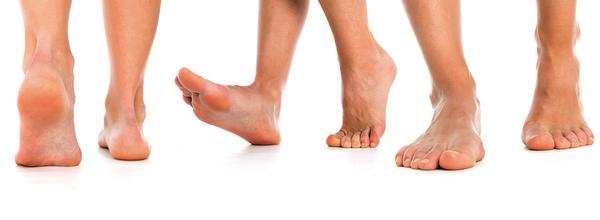News >> Health
A leg-up for tracking neuropathy
 02 Oct, 2016
02 Oct, 2016
The Massachusetts Institute of Technology (MIT) is developing a mobile-enabled diabetic foot analyser, a portable screening device which will help in tracking neuropathy, a nerve damage that typically leads to loss of sensation in the feet and is a major cause of foot ulcers and leg amputations. The device provides quantitative information about a diabetic patient’s foot sensation by connecting wirelessly to a mobile phone that records and tracks data on a periodic, per-person and per-visit basis.
Being tested in Tamil Nadu
MIT has built a few prototypes of the device and is in the process of validating it in both urban and rural populations in Chennai and villages in Kancheepuram district. The project, developed by graduate student Jess Ong at MIT Touch Lab under the supervision of Mandayam A. Srinivasan, director, MIT Touch Lab, and Mohan Thanikachalam of Tufts University School of Medicine, is funded by the MIT Tata Center for Technology and Design which supports research that improves quality of life for people at the bottom of economic pyramid.
“A key limitation to current screening and ulcer prevention in rural India is the impracticality of current diagnostic equipment, which is expensive, bulky and requires trained operators. Consequently, the majority of the Indian diabetic population in low-resource settings is currently not being tested for neuropathy,” Dr. Srinivasan told The Hindu in an e-mail interview. He also said that the mobile-enabled device significantly improves upon the current neuropathy screening technologies while also being portable, rugged, battery-operated and mobile-connected. “The device can easily be operated by community health workers with minimal technical background in remote, low-resource rural environments.”
Dr. Srinivasan pointed out that key to the process is the vibration perception threshold (VPT) that indicates the extent of neuropathy. “However, current biothesiometers that measure VPT are heavy, inefficient, and inconsistent. Our device not only addresses and improves upon all three of these limitations, but also adds more functionality and convenience,” he added. Biothesiometers cost over $5,000 at present; the components of the current mobile-enabled foot analyser prototypes cost around $350 overall, a price difference — combined with the other advantages of portability and mobile-based technology — that may enable the MIT device to have a significantly larger reach.
Expanding the footprint
Once the initial clinical validation studies are done, MIT hopes that the ongoing non-communicable disease prevention programme in rural Tamil Nadu will be able to adopt the device as part of their mobile-based platform for diabetes care to underserved populations, based on which it might find its way into other programmes and hospitals around India. MIT is currently in the early stage of getting institutional review board (IRB) approval for the experimental protocol for the device.
Experts say while such devices are welcome, they must be thoroughly validated. “It is very important to have such mobile-based analysers, as it increases the accessibility in remote areas where carrying equipment is cumbersome and trained personnel are hard to come by,” said Dr. V. Mohan, President and Chief of Diabetes Research at Madras Diabetes Research Foundation.
He, however, pointed out that biothesiometry is already a well-validated technique, and there are simpler techniques such as the Semmes-Weinstein monofilament test to screen neuropathy which does away with the need for biothesiometry. “These cost virtually nothing and are good enough to detect neuropathy in remote areas of the country where equipment and trained manpower are not available,” he added.
Source: The hindo

